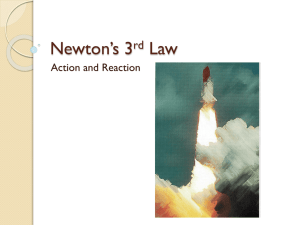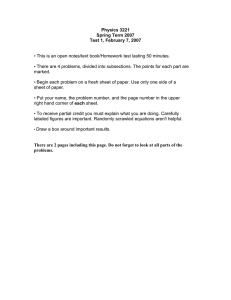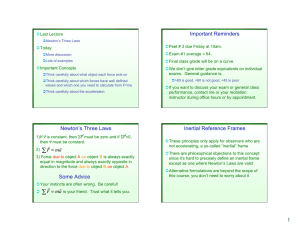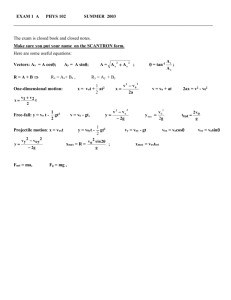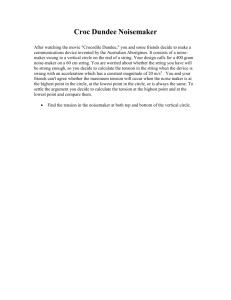Forces and Reference Frames
advertisement
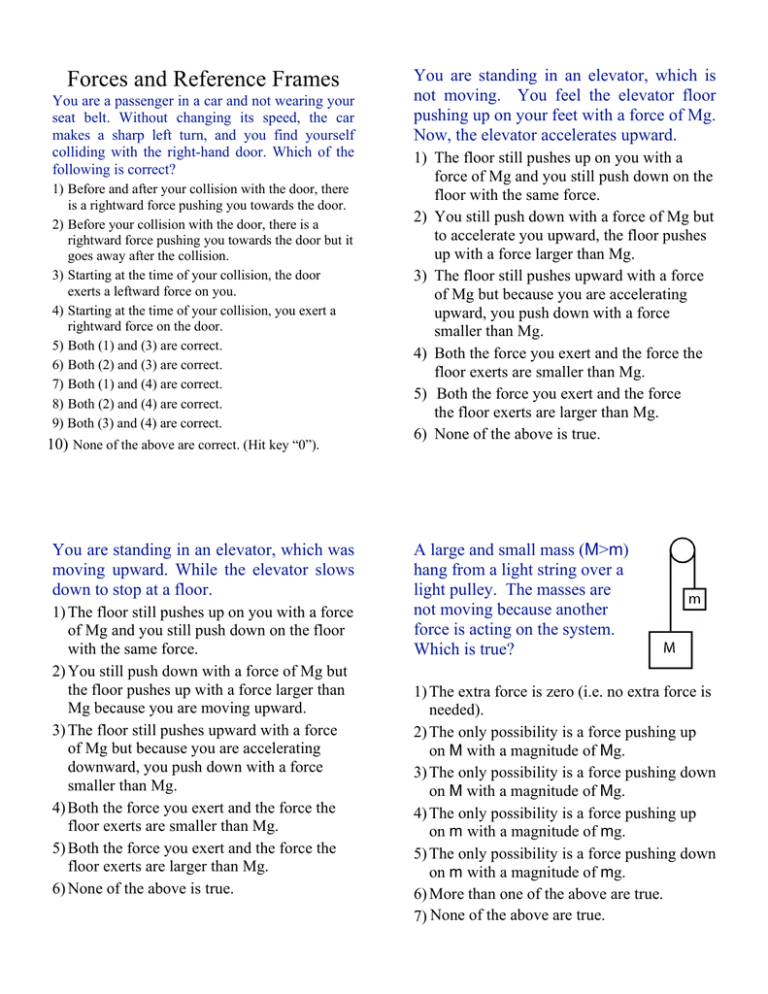
Forces and Reference Frames You are a passenger in a car and not wearing your seat belt. Without changing its speed, the car makes a sharp left turn, and you find yourself colliding with the right-hand door. Which of the following is correct? 1) Before and after your collision with the door, there is a rightward force pushing you towards the door. 2) Before your collision with the door, there is a rightward force pushing you towards the door but it goes away after the collision. 3) Starting at the time of your collision, the door exerts a leftward force on you. 4) Starting at the time of your collision, you exert a rightward force on the door. 5) Both (1) and (3) are correct. 6) Both (2) and (3) are correct. 7) Both (1) and (4) are correct. 8) Both (2) and (4) are correct. 9) Both (3) and (4) are correct. 10) None of the above are correct. (Hit key “0”). You are standing in an elevator, which was moving upward. While the elevator slows down to stop at a floor. 1) The floor still pushes up on you with a force of Mg and you still push down on the floor with the same force. 2) You still push down with a force of Mg but the floor pushes up with a force larger than Mg because you are moving upward. 3) The floor still pushes upward with a force of Mg but because you are accelerating downward, you push down with a force smaller than Mg. 4) Both the force you exert and the force the floor exerts are smaller than Mg. 5) Both the force you exert and the force the floor exerts are larger than Mg. 6) None of the above is true. You are standing in an elevator, which is not moving. You feel the elevator floor pushing up on your feet with a force of Mg. Now, the elevator accelerates upward. 1) The floor still pushes up on you with a force of Mg and you still push down on the floor with the same force. 2) You still push down with a force of Mg but to accelerate you upward, the floor pushes up with a force larger than Mg. 3) The floor still pushes upward with a force of Mg but because you are accelerating upward, you push down with a force smaller than Mg. 4) Both the force you exert and the force the floor exerts are smaller than Mg. 5) Both the force you exert and the force the floor exerts are larger than Mg. 6) None of the above is true. A large and small mass (M>m) hang from a light string over a light pulley. The masses are not moving because another force is acting on the system. Which is true? 1) The extra force is zero (i.e. no extra force is needed). 2) The only possibility is a force pushing up on M with a magnitude of Mg. 3) The only possibility is a force pushing down on M with a magnitude of Mg. 4) The only possibility is a force pushing up on m with a magnitude of mg. 5) The only possibility is a force pushing down on m with a magnitude of mg. 6) More than one of the above are true. 7) None of the above are true. A large and small mass (M>m) hang from a light string over a light pulley. The masses are not moving because a force is pushing up on M. Which is true? 1) The tension in the string is Mg everywhere. 2) The tension in the string is mg everywhere. 3) The tension in the string is (M+m)g everywhere. 4) The tension in the string is (M-m)g everywhere. 5) The tension in the string is Mg on the left and mg on the right. 6) The tension in the string is more than Mg on the left and mg on the right. 7) None of the above are true. A large and small mass (M>m) hang from a light string over a light pulley. No forces other than gravity and the string are acting on the system so the masses start to accelerate. Which is true? 1) The tension in the string is Mg. 2) The tension in the string is mg. 3) The tension in the string is more than Mg. 4) The tension in the string is less than Mg. 5) The tension in the string is more than mg. 6) The tension in the string is less than mg. 7) More than one of the above are true. 8) None of the above are true.
